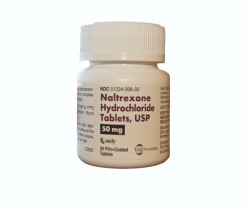What Alternative Treatments are there for Opiate Addiction Besides MMT?
Opiate addiction is a debilitating condition that causes undue strain and stress on every aspect of a user’s life. Unfortunately, many are unaware of the various methods of treatment that do exist to help people overcome opiate dependence. In additional to methadone maintenance treatment or MMT, users can be provided with an array of opportunities to help them overcome this terrible disease. Some alternatives to MMT include:
- LAAM
- Buprenorphine
- Naltrexone
Each of these medications can be effectively used to help patients get past the symptoms and side effects of opiate withdrawal and be more prepared for the psychological counseling and therapy that is necessary to facilitate recovery from opiate addiction.
LAAM
LAAM is a commonly overlooked method of treatment for opiate addiction that was once more widely used. Since methadone was FDA approved, the use of LAAM has been greatly reduced overall. However, this agonist features some benefits that cannot be afforded with methadone treatment including:

Naltrexone is another opiate treatment medication.
- Longer acting doses that allow patients to take medication every 3 days rather than daily.
- Reduced risk of missing a dose as there are fewer doses required.
Buprenorphine
Another alternative to methadone treatment is buprenorphine. This medication, the active ingredient in drugs such as Suboxone and Subutex, is considered a partial agonist. Buprenorphine blocks the opioid receptors from responding creating a diminished response. Users can appreciate reduced cravings and fewer withdrawal symptoms when they are taking this medication.
Naltrexone
This medication is an antagonist which means that it actually blocks the receptors that are responsible for creating euphoria in response to the use of opiates such as heroin or hydrocodone. As a result, patients who take Naltrexone as part of an opiate addiction treatment regimen are less likely to relapse because the use of opiates is no longer satisfying or “fun.”
According to the Substance Abuse and Mental Health Services Administration, medications such as buprenorphine and naltrexone have a much lower incidence of abuse and misuse than methadone. As a result, patients who actively partake in the alternative treatments listed above are more likely to recover, less likely to relapse and have a higher instance of improved overall health than those who take Methadone and are later required to “wean” or taper the drug off in order to fully live drug free.
Cravings and withdrawal reduction is always at the forefront of opiate addiction treatment, each of the medications that have been discussed here can help to reduce cravings, block the effects of opiates and minimize symptoms of withdrawal for a more comfortable recovery process.







